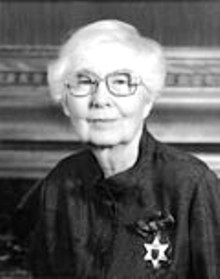Related Research Articles

Joseph Fafard was a Canadian sculptor.
John Cullen Nugent (1921-2014) was a Canadian artist and educator known primarily for his public art works, often in the form of abstract sculpture.
Ron Shuebrook is an American-born Canadian abstract artist living in Guelph, Ontario. He is a prominent teacher and administrator, as well as a writer.

The Mendel Art Gallery was a major creative cultural centre in City Park, Saskatoon, Saskatchewan. Operating from 1964 to 2015, it housed a permanent collection of more than 7,500 works of art. The gallery was managed by the city-owned Saskatoon Gallery and Conservatory Corporation, which also managed the Mendel's sister institution, the Saskatoon Civic Conservatory. In 1999, it was the 16th largest public art gallery in Canada by budget size and had the sixth highest overall attendance in the country. By 2010, it had more than 180,000 visitors.
Harold Barling Town, D.Litt was a Canadian artist who worked in many different media, but is best known for his abstract paintings.

Ivan Kenneth Eyre was a Canadian artist best known for his prairie landscapes and compositionally abstract, figurative paintings. In addition, Eyre was a Professor Emeritus of painting and drawing at the University of Manitoba where he taught for 33 years, from 1959 until his retirement in 1992. He has been described as a "visual philosopher" and "a true outsider and visionary".
Yves Gaucher, was an abstract painter and printmaker. He is considered a leader amongst Quebec's printmakers in the 1950s and 60s. His work has been included in the collections of public galleries such as the National Gallery of Canada in Ottawa, the Museum of Modern Art in New York City, and the Victoria and Albert Museum in London.

Wynona Croft Mulcaster was a Canadian painter and teacher from Saskatchewan, best known for her prairie landscapes. She also played an important role in developing competitive riding in Saskatoon.

Reta Cowley was a Canadian painter. She is known for her watercolors of the prairie country around Saskatoon, Saskatchewan, which capture the unique qualities of space and light.
Otto Donald Rogers was a Canadian painter and sculptor from rural Saskatchewan whose abstract works reflects his Baháʼí Faith in unity in diversity. His work has been widely exhibited. It is held in many private and public collections in Canada and other countries.

Joost Baljeu was a Dutch painter, sculptor and writer. He is known for his large outdoor painted steel structures and his book on Theo van Doesburg.
Russell Yuristy is a Canadian artist whose work is included in several major collections including the National Gallery of Canada. Yuristy was inducted as a member of the Royal Canadian Academy of Arts in 2014.
Marie Lannoo is a Canadian artist. Lannoo was born in Simcoe, Ontario in 1954 but raised in Delhi, Ontario. Lannoo moved to Saskatchewan in 1975 and does her work primarily in Saskatoon. Lannoo is known for her abstract paintings. Her current abstract work uses layered colours and the illusion of depth.
Mina Forsyth was a Canadian artist. She is known for her expressionist and abstract landscapes, figural works and still life paintings.
Alicia Dawn Popoff was a Canadian abstract painter who worked primarily in acrylic and sometimes mixed media. She also worked in sculpture, sometimes collaborating with her husband and fellow artist and sculptor Leslie Potter. Popoff's work has been exhibited across Canada in numerous exhibitions and commercial galleries and can be seen in public and corporate collections.
Sandra Semchuk is a Canadian photographic artist. In addition to exhibiting across Canada and internationally, Semchuk taught at Emily Carr University of Art and Design from 1987 to 2018.
Stanley Ernest Brunst was a Canadian painter, best known for his early abstractions.
Clara Hume was a Canadian painter. Her work is largely focused on landscapes and still lifes. Her paintings have been exhibited in Saskatchewan and Manitoba as part of group and solo exhibitions. She was particularly noted for her detailed acrylic paintings of prairie wildflowers and grasses, and prairie landscapes.
Roald Nasgaard is a champion of abstract art in Canada.
References
- 1 2 3 Nasgaard, Roald (2024). Eli Bornstein: Life & Work. Toronto: Art Canada Institute. ISBN 978-1-4871-0347-7.
- 1 2 3 4 5 6 7 8 Ivanochko 2014.
- 1 2 3 4 5 Eli Bornstein, Saskatchewan NAC.
- 1 2 3 Moppet 2008.
- 1 2 3 Cochrane 2014.
- 1 2 Enright 2013.
- ↑ Eli Bornstein, ArtSask.